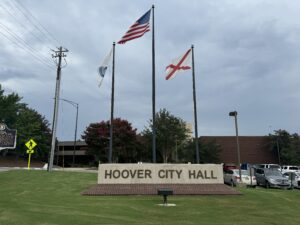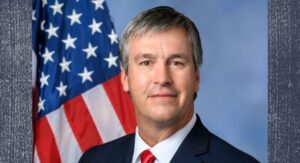Sweet Meteor of Death campaign rolling on empty promises

The Sweet Meteor of Death is not going to upstage this election season. That’s according to the NASA Near Earth Object Program that tracks roughly 15,000 asteroids, comets and gigantic pieces of space rock that pose any kind of threat to the Earth. That may be bad news for 13 percent of American registered voters, who told Public Policy Polling last month that given a choice of Donald Trump, Hillary Clinton or “A giant meteor hitting the Earth,” they’ll take the space rock. In what might be one of the most dark-humor social media movements this election season, the “Sweet Meteor of Death 2016,” as an alternative to Trump or Clinton has caught fire and keeps blazing. Sweet Meteor has several Facebook accounts, the biggest with 85,000 friends, while the Sweet Meteor O’ Death 2106 Twitter account (@smod2016) has 22,000 followers. That doesn’t include countless tweets assigning the #SMOD16 hashtag. There are coffee mugs and T-shirts for sale, and videos and memes galore. There are unconfirmed reports on blogs that Clinton even bought some Sweet Meteor tees. “The Meteor is particularly appealing to independent voters, functionally in a three-way tie at 27 percent, to 35 percent for Clinton and 31 percent for Trump,” PPP reported in its national poll taken June 27-28 of 853 registered voters. Various blogs and accounts indicate some promises of SMOD, including wiping out ISIS, being tough on Putin and Iran, ending world hunger, changing Washington politics. That makes it attractive to several constituencies. NASA is not commenting on Sweet Meteor’s candidacy. In fact, it’s safe to say the space agency is taking a “not with a 10-foot pole” position about talking about it. Fortunately, NASA’s Near Earth Object Program, at NASA’s Jet Propulsion Laboratory in Pasadena, California, looks skyward, through a massive, coordinated coalition of government, university, private and amateur satellites and all-sorts-of-technology telescopes, and sees nothing coming our way anytime soon, according to its website. Among the 15,000 objects zipping around the solar system in the program’s sights are 586 “Potentially Hazardous Asteroids,” or PHAs, which are at least 500 feet in diameter and have orbits that would bring them within about 4.6 million miles of Earth. None are due anytime soon. And none ever has been named SMOD16. As recently as March 22, the last PHA, a comet dubbed P/2016 BA14, about 3,000-feet in diameter, whizzed through the neighborhood, about 2.2 million miles from Earth. That may seem a long way away (about nine times as far away as the moon,) but the NEO Program reported it was the third-closest comet flyby in recorded history. There’s nothing else close to that size on the horizon, but there’s always something out there. Monday, according to the NEO Program, an asteroid about the size of a car is expected to pass inside the moon’s orbit, coming within 164,000 miles of our Big Green and Blue. On Wednesday an asteroid about the size of a jetliner will pass within 2.6 million miles of Earth. And Monday, an asteroid about the scale of a 25-story building will fly within about 4 million miles of Earth-sweet-home. That doesn’t mean there aren’t smaller objects crashing down all the time. The NEO Program reported in 2014 that, in the previous 20-year period, 586 very small asteroids plummeted through the Earth’s atmosphere and burned up in fireballs or explosions, the most notorious being the 2012 Chelyabinsk meteor, a 65-foot wide chunk of space rock that rattled the region of Russia. But that was hardly a Sweet Meteor of Death. In other words, Gary Johnson has a better chance of beating Trump and Clinton.
A lot of holes in GOP presidential ground game in key states
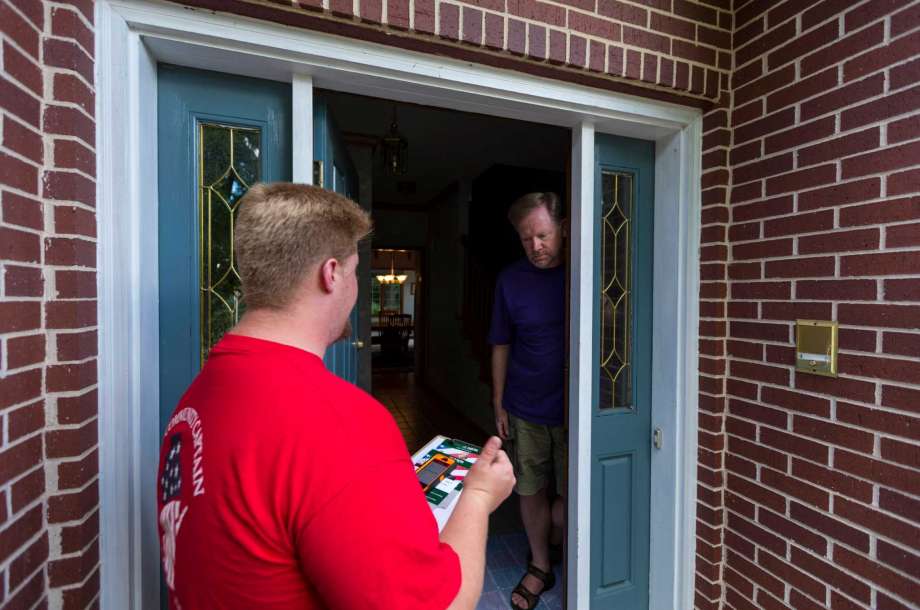
Presidential battleground states were supposed to be swarming with Republican Party workers by now. “We’ve moved on to thousands and thousands of employees,” party chairman Reince Priebus declared in March, contrasting that with the GOP’s late-blooming staffing four years earlier. “We are covering districts across this country in ways that we’ve never had before.” That hasn’t exactly happened, a state-by-state review conducted by The Associated Press has found. With early voting beginning in less than three months in some states, the review reveals that the national GOP has delivered only a fraction of the ground forces detailed in discussions with state leaders earlier in the year. And that is leaving anxious local officials waiting for reinforcements to keep pace with Democrat Hillary Clinton in the states that matter most in 2016. To be sure, the national party actually has notched record levels of fundraising over the past few years and put together a much more robust ground game than it had in 2012. But officials acknowledge the real competition isn’t their past results or the chronically cash-strapped Democratic Party. It’s Clinton and what GOP party chairman Reince Priebus calls “that machine” of Clinton fundraising. Some examples of Republican shortfalls: Ohio Republicans thought they were going to see 220 paid staffers by May; in reality, there are about 50. Plans for Pennsylvania called for 190 paid staffers; there are about 60. Iowa’s planned ground force of 66 by May actually numbers between 25 and 30. In Colorado, recent staff departures have left about two dozen employees, far short of the 80 that were to have been in place. AP learned of the specific May staffing aims from Republicans who were briefed earlier this year; the RNC did not dispute them. Current totals came from interviews with local GOP leaders over the past two weeks. The gulf between what state leaders thought they could count on and what they’ve actually got comes as RNC’s ground game is asked to do more than ever before. Presumptive nominee Donald Trump is relying on the party to do most of the nuts-and-bolts work of finding and persuading voters in the nation’s most competitive battlegrounds. “This is a race we should win,” Ohio GOP chairman Matt Borges said, citing a voter registration boom. “Now, we have to put the people in the field.” In New Hampshire, a swing state that also features one of the nation’s most competitive Senate contests, the Republican National Committee’s original plan called for more than 30 paid staff on the ground by May. Yet what’s happening there highlights that even when the RNC is close to meeting its staffing goals, there can be problems. In this case, 20 positions have been converted to part-time, and local officials have been struggling to fill them. “It’s a tall order to ask the RNC to be the complete field operation for the presidential nominee,” said Steve Duprey, a national party committeeman from New Hampshire. “We’re following through on the plan, but it was slower being implemented than we first would have hoped.” Borges and Duprey, like Republican leaders across the nation, acknowledged that the national party has dramatically reduced its staffing plans in recent months. “You discuss idealistic, you discuss realistic,” said the RNC’s political director Chris Carr. “Some people hear what they want to hear.” The Democrats have been more focused. The GOP’s foes, says party chairman Priebus, “have built their program around a candidate.” By that measure, Clinton and her Democratic allies appear to be quite far ahead, with roughly double the staff of the Republicans in Ohio, for example. For anyone – party or candidate – ground operations are expensive. The RNC’s 242-person payroll cost $1.1 million in May, federally-filed financial documents show. Additionally, the party transfers hundreds of thousands of dollars each month to state parties, which in turn hire more people. Between direct RNC employees and state employees hired with the help of transfers, the party counts more than 750 staff members, including 487 spread across the country and concentrated in battleground states. By contrast, at this point in 2012, there were just 170 paid Republican operatives across the country. Party officials say they are confident they will raise enough money to maintain – and very likely boost – the current level of employees until Election Day. Trump, who did not actively raise money during the primary season, touted surprisingly strong fundraising numbers in late May and June, including $25 million that will be shared with the party. But it was the primary triumph of Trump in May – and the fact that he did not bring with him a hefty portfolio of donors – that derailed the party’s fundraising and hiring goals, party officials said. The timing was important because a nominee typically serves as a major fundraiser for the national party, and having one in March or April would have given the Republicans a boost. A sign on an office door in Sarasota, Florida, illustrates how critical the RNC will be to Trump’s bid for the White House. It’s Trump’s state headquarters. “THANKS FOR STOPPING BY OUR OFFICE!” the blue paper reads. “Our office is TEMPORARILY CLOSED to the public, while our office works to prep for the National Convention in Cleveland.” A phone call to the number on the sign ended with an automated message stating, “Memory is full.” The Republican Party has 75 employees on the ground in Florida – a few dozen shy of Clinton – but they aren’t seamlessly integrated with the Trump campaign. “I do see cooperation between the national party and the Trump campaign,” said Michael Barnett, chairman of the Palm Beach County GOP. “But that hasn’t materialized at the local level yet. That doesn’t mean it won’t happen. It’s a little bit of a late start, but I’m not nervous. Not yet.” Like Florida, Ohio and New Hampshire, Wisconsin is a presidential battleground that features a highly competitive Senate race. That means national party staffers have the dual task
On Dallas trip, Barack Obama will try to make sense of shootings
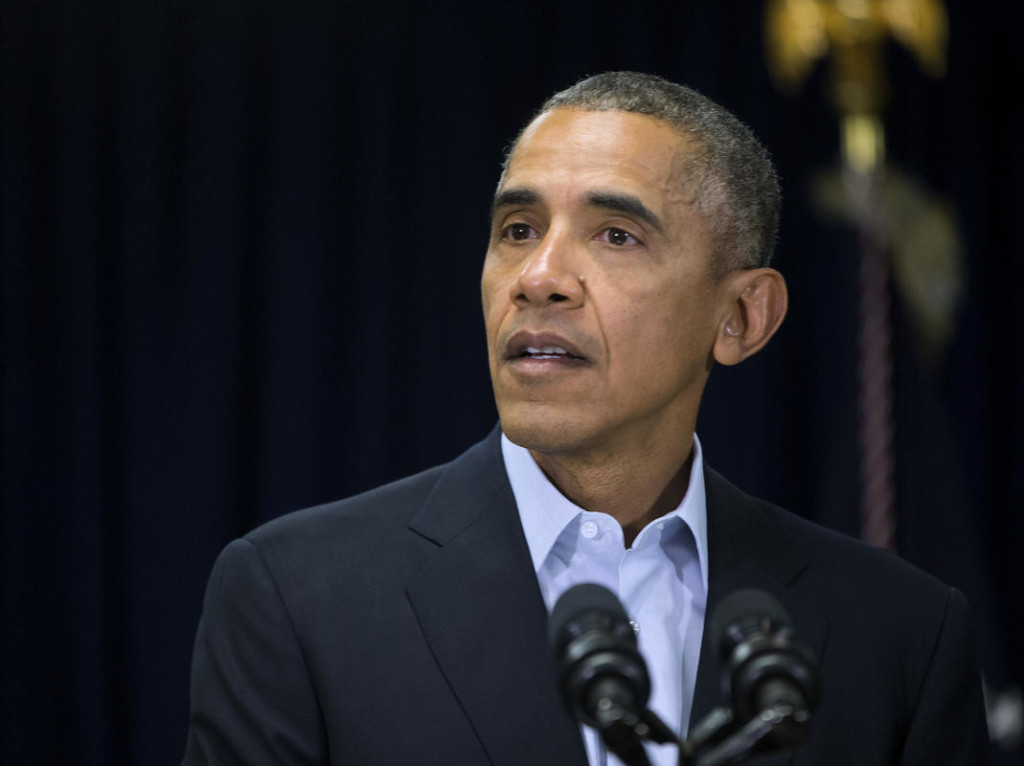
For President Barack Obama, the decision to return early from an overseas trip after a series of shocking shootings will prove to be easy compared to his next challenge: Comforting an America rattled by the violence. After arriving from Spain late Sunday, Obama will fly Tuesday to Dallas, the scene of the massacre of police officers that, on the heels of two caught-on-video police shootings, has emerged as a tipping point in the national debate about race and justice. Obama is due to deliver remarks at an interfaith memorial service and is expected to meet with victims’ families and with local law enforcement officials mourning their own. Former President George W. Bush, his wife, Laura, and Vice President Joe Biden will also attend, and the ex-president will deliver brief remarks. To some degree, the trip is a familiar ritual for a president who has embarked in recent years on similar consolation missions with relentless frequency. But it’s clear that Obama views the moment as distinct. In choosing to the deliver a high-profile speech, the president has tasked himself with ministering to Americans as they make sense of a frustrating cloud of issues swirling around the shootings. The president sees delivering this sort of guidance a core part of his leadership, so much so that some of his memorable speeches were in honor of mass shooting victims, including his challenge to protect children from guns in Newtown, Conn. – “We’re not doing enough.” – and his singing of “Amazing Grace” after the shooting in a black church in Charleston, S.C. But it’s far from clear whether these moments fostered movement – either on legislation or race relations – and Obama has had to face the limits of his rhetoric. As he has in the past, Obama will search this week for a way to break through. As he traveled to Poland and Spain last week for meetings with European leaders, the president was publicly working through his thoughts. At times, he acknowledged “anger” and “confusion” in the public, and at other times he seemed to downplay the enormity of events. On the shootings by police of black men in Minnesota and Louisiana, Obama called for more activism and reforms. And he sought to impress upon white Americans what he said he and other African Americans already know: The problem is real. On the shooting in Dallas, Obama cast Micah Johnson, the sniper killed in a standoff with police, as “demented” and his motives as unknowable. People should not believe that “the act of a troubled individual speaks to some larger political statement across the country,” he said. “It doesn’t.” Obama also pointed to other forces driving discontent at home and in Europe – lone-wolf terrorism or economic instability wrought by globalization – and tried to sell his policies aimed at each. The comments highlighted this president’s rationality and a tendency to analyze people’s fears rather than validate them – both traits that at times have limited his ability to connect. Asked Saturday about rising worries about safety, Obama cited crime statistics. He bluntly dismissed comparisons to the domestic turbulence of the 1960s as overblown. “That’s just not true,” he said. Obama’s remarks also captured the president continuing to try to serve as bridge builder between white and black Americans, protesters and police. It’s a role that helped catapult him to political stardom, but one he’s struggled to inhabit as president during a period of sharp political polarization and continued racial tensions. Still, Obama wasn’t about to cede the role this week. White House officials said the decision to trim his trip to Spain by one day was driven in part by not wanting other, divisive voices to fill the void left in his absence. On Sunday, a few hours before returning home, Obama tried again to walk a center line, as he issued a plea for better understanding between police and demonstrators taking part in the protests across the country. “I’d like all sides to listen to each other,” he said. Republished with permission of the Associated Press.
Martha Roby: Mental health, opioid bills advance

Congress took big steps this past week toward enacting legislation critical to addressing a few key national issues: the opioid epidemic and gaps in mental health services. Some weeks ago I relayed the good news that the House was working on a slate of bills aimed at combatting the growing heroin and opioid addiction epidemic facing our county. Drug overdoses account for as many as 47,000 deaths a year, and the number of those involving opioid prescription pain relievers has risen drastically over the last several years. Alabama is experiencing a particularly significant increase in opioid overdoses. Our state saw an almost 20 percent rise in opioid overdoses between 2013 and 2014, the last year full data is available, which was the fifth highest nationally. I’m pleased to report that the House and Senate negotiated a final Conference Report on S. 524, the Comprehensive Addiction and Recovery Act of 2016 that addresses these issues. This legislation will marshal the resources of the public and private sectors to better respond to opioid abuse and addiction. Of note, the bill: improves prevention and education efforts through the Department of Health and Human Services, the Office of National Drug Control Policy and the National Institutes of Health; enhances law enforcement capabilities by authorizing paid-for Department of Justice grants for drug fighting efforts that work; focuses attention on treatment and recovery by expanding access to addiction services and opioid overdose reversal drugs through the Substance Abuse and Mental Health Services Administration; and prioritizes services for veterans by improving drug policies, treatment offerings and patient advocacy efforts within the VA. The House has passed the package and it now awaits final approval by the Senate. The House also took an important step toward addressing our country’s mental health crisis. More than 11 million Americans deal with the significant mental health struggles of severe schizophrenia, bipolar disorder, or major depression. Serious mental health problems that go unaddressed can manifest in dangerous ways, as we saw with the terrible tragedies that took place in Sandy Hook, Connecticut, Aurora, Colorado, and other places. My colleague Rep. Tim Murphy has been crafting legislation that would address some of our nation’s deficiencies in identifying and treating mental illness. H.R. 2646, the Helping Families in Mental Health Crisis Act, seeks to reform the broken mental healthcare system by refocusing outdated programs, improving the effectiveness of grants, and removing federal barriers to care. It will take a lot of work to rebuild our nation’s mental health network, but it must be done and this legislation is the first step. It passed by an overwhelming bi-partisan vote of 407-5 and now awaits action in the Senate. Opioid addiction and mental health are two acute problems facing our country, and I’m pleased that Congress is taking action on smart legislation to address them. ••• Martha Roby represents Alabama’s 2nd Congressional District. She lives in Montgomery, Alabama with her husband, Riley and their two children.
This week in the U.S. House of Representatives, Senate: July 11-15, 2016
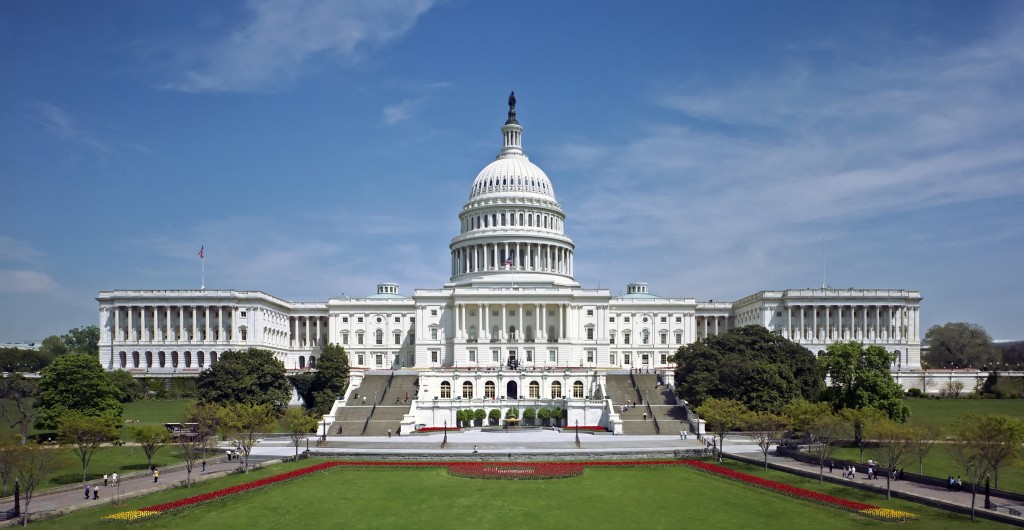
The U.S. House of Representatives and U.S. Senate are both in session this week for a very busy legislative schedule. After this week, both chambers will take an extended break for both the Republican and Democratic national party conventions as well as the August recess through the Labor Day holiday. U.S. House of Representatives On Monday, the House is in session and will consider a robust package of 24 bills under Suspension of the Rules. A full list of bills can be found here. Among these bills is a House amendment to H.R. 636: Federal Aviation Administration Reauthorization Act of 2016, which represents an agreement to extend the FAA and federal aviation programs through FY 2017. The current FAA authorization expires on July 15. Alabama co-sponsor(s): None Also, H.R. 5588: Veterans’ Compensation COLA Act of 2016. This bill authorizes the annual cost-of-living adjustment (COLA) for veterans. Alabama co-sponsor(s): None For the balance of the week, the House is expected to consider the following: H.R. 5538: The Interior, Environment and Related Agencies Appropriations Act for FY 2017. The bill provides a total of $32.1 billion in net discretionary spending, almost 1 percent less than current funding and 3 percent less than requested by the president. It increases funding for the National Park Service, U.S. Geological Survey, Bureau of Indian Affairs and Indian Health Service but cuts funding for EPA, the Bureau of Land Management, Office of Surface Mining, and the Fish and Wildlife Service. Alabama co-sponsor(s): None S.304: The Conscience Protection Act of 2016. The bill prohibits the federal government, as well as state and local governments, from penalizing, retaliating against, or otherwise discriminating against a health care provider because the provider does not provide or sponsor abortion coverage. It provides for a complaint process and civil actions for any violations through the HHS and Justice departments. Alabama co-sponsor(s): None H.R. 5119: The No 2H2O from Iran Act. The bill prohibits federal funds from being used to purchase heavy water from Iran, or to issue licenses to purchase heavy water. Alabama co-sponsor(s): 6th District U.S. Rep. Gary Palmer H.R. 5631: The Iran Accountability Act. The bill expands and strengthens existing sanctions against Iran related to its ballistic-missile program, support for international terrorism, and its ongoing record of human rights abuses against its own population. Alabama co-sponsor(s): None Senate Amendment to the House Amendment to S.764: Genetically Modified Organism (GMO) Labeling Requirements. The House is expected to consider Senate-passed legislation directing the Agriculture Department to issue nationwide rules for determining which foods should be labeled as genetically modified. The bill offers food companies the option of on-label disclosure, the use of a symbol developed by the Agriculture Department, or electronic bar codes that consumers can scan with their smartphones. Alabama co-sponsor(s): N/A U.S. Senate The Senate is in session and may take further procedural votes on the House-passed H.R. 5293: The Department of Defense Appropriations bill for FY 2017. Due to Democratic opposition the measure, which was reported unanimously by the Appropriations Committee, failed to achieve the necessary 60 votes of support during a Senate vote last week. Alabama co-sponsor(s): N/A House-passed FY 2017 Military Construction and Veterans Affairs appropriations conference report, which also serves as the vehicle to provide funding to combat the Zika virus. Other legislation, namely the FAA extension, the Military Construction and Veterans Affairs appropriations conference report, which also serves as the vehicle to provide funding to combat the Zika virus, as well as the conference report to S. 524 to combat opioid abuse are also likely.
Alabama Civil War museum takes steps to better protect its artifacts

A northwest Alabama museum that houses Civil War relics is taking steps to preserve them from extreme temperatures. The TimesDaily reports that the Pope’s Tavern museum plans to install a heating and air conditioning unit to control the climate of its upstairs areas. The former inn, stage coach stop and Civil War hospital has not had a climate controlled environment to help preserve many of its artifacts. Curator Wayne Higgins says that puts much of its collection — especially pieces made of cloth or paper — at risk of damage. Republished with permission of the Associated Press.
West Virginia native Nick Saban works to bring relief amidst flooding tragedy
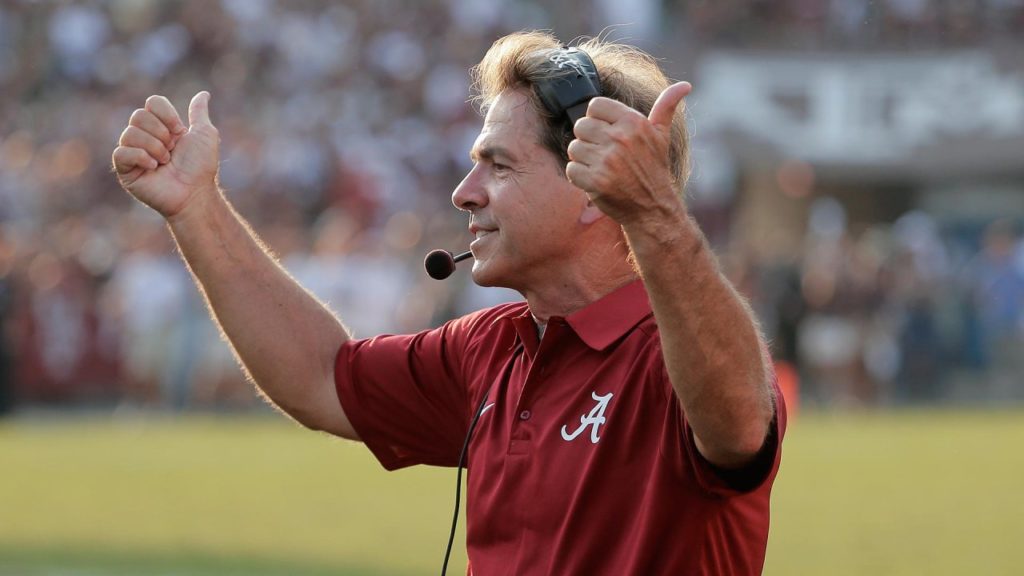
Nick Saban may have cemented his legacy in Alabama as the head football coach of the Crimson Tide, but he’ll always be a West Virginia boy. Amidst the tragic flooding in the Mountain State Saban, and fellow West Virginian and sometimes-rival Florida State University Seminoles coach Jimbo Fisher are working together to bring relief. The devastating flooding of June 23 destroyed more than 1,200 homes, taking at least 23 lives in the process, making it the deadliest flash flood since May 2010. Saban and Fisher, who grew up in Monongah and Clarksburg, respectively, are rallying high schools in their new home states to help provide impacted schools with football equipment, including helmets, pads, and practice jerseys, so students there may more quickly return to the activities and traditions they hold dear. “Football was such an important part of my childhood in West Virginia, and to see the devastation the flooding has caused, and how it has threatened so many high school football teams, we wanted to find a way to help,” Saban explained in a statement announcing the donation program. “We are asking each high school from across the state to donate a full uniform to help these schools get their kids back on the football field this season.” We are taking uniform donations to aid high school football teams in West Virginia affected by recent flooding. pic.twitter.com/eKpBRB3ptT — Crimson Tide FB (@CrimsonTide_FB) July 8, 2016 “As football coaches, we can do a small part to help the community heal by assisting the high school football programs affected by this tragedy,” Coach Fisher wrote in his letter to Florida’s high school coaches. “We have all seen how athletics can help heal and rebuild communities that have suffered through a tragedy.” Saban and Fisher will be joined on Wednesday July 13 by FSU assistant coach and fellow West Virginia native Rick Trickett at Clay County High School to present the donations.
Bradley Byrne: We must work together to solve our nation’s problems
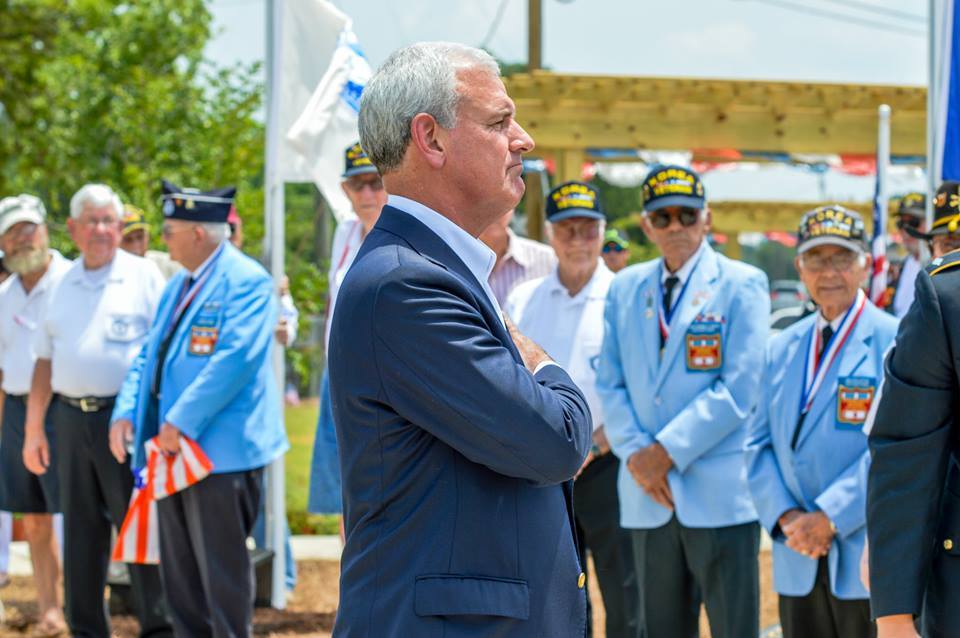
Is it really as bad as it seems? That is a question I get all the time. People want to know if the partisanship and gridlock in Washington is actually like what they see on television. The short answer is no. The reality is Republicans and Democrats often work together on bipartisan legislation to address serious issues, but it just doesn’t always make the front page of the newspaper or the evening news because it isn’t “exciting” enough. It is an election year, and I know partisan politics are what take up most of the attention. But in Washington, bipartisan work is underway to address some important issues that have the potential to make a real difference for American families. For example, just this past week the House passed a significant overhaul of our nation’s mental health programs. My family has been personally impacted by mental illness as my grandfather was shot and killed by a mentally ill man, so this issue is personal to me. For too long we have failed to actually treat those who suffer from mental illness. Our bill makes clear that mental illness is not a crime but rather a true health issue that should be treated as such. Addressing the mental health crisis will also help fight these terrible mass violence events that have struck our country in recent years. Many of the people who committed the crimes suffered from mental illness. Instead of pushing new gun laws, we should be focusing on the root cause of these acts, like mental health reform. This is an issue that unites Republicans and Democrats, and I am pleased to report our mental health bill passed by a vote of 422 to 2. Another great example of the bipartisan work being done in Congress is a bill to strengthen career and technical education programs. As former chancellor of Alabama’s two-year college system, I have seen firsthand the amazing work done through career and technical education. These programs help connect people with the skills they need in order to meet workforce demands. Our reform bill gives states more flexibility to use federal resources while also ensuring that we focus on employability skills and work-based learning opportunities. Just as important, our legislation gives parents, students, and stakeholders a voice in setting performance goals and evaluating the effectiveness of the programs. I was pleased to support the Strengthening Career and Technical Education for the 21st Century Act when it passed the Education and the Workforce Committee by a vote of 37 to 0. The House also passed a bill last week by a vote of 407 to 6 to address the opioid prescription drug crisis. The opioid crisis has impacted families from every corner of the United States, and our legislation will help ensure people have access to treatment they desperately need. These are just three examples of bipartisan work being done in Congress to address actual challenges facing our country. I think this good news is especially important given the tragic events that recently impacted our country. During times of tragedy, it is easy to become angry and allow the issues to drive us further apart, but we cannot fall victim to that temptation. Instead, the answer is love for one another and compassion even for those with whom we may not always agree. Most importantly, the key is to focus on the things that unite us. That is exactly what happened in the People’s House this past week, and I will continue looking for opportunities to support bills that unite us, instead of drive us further apart. • • • Bradley Byrne is a member of U.S. Congress representing Alabama’s 1st Congressional District.

